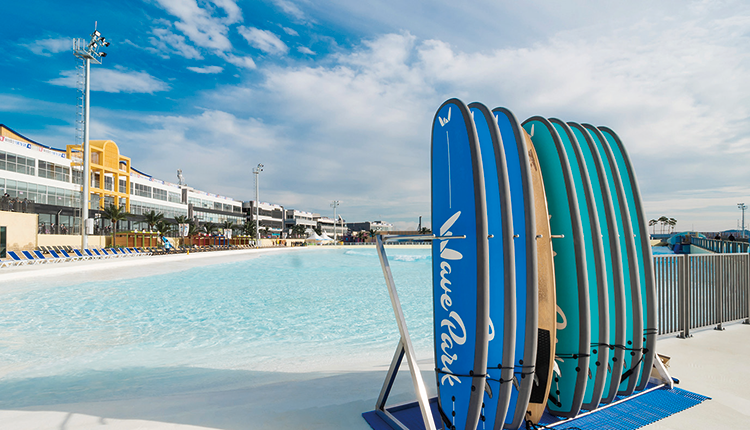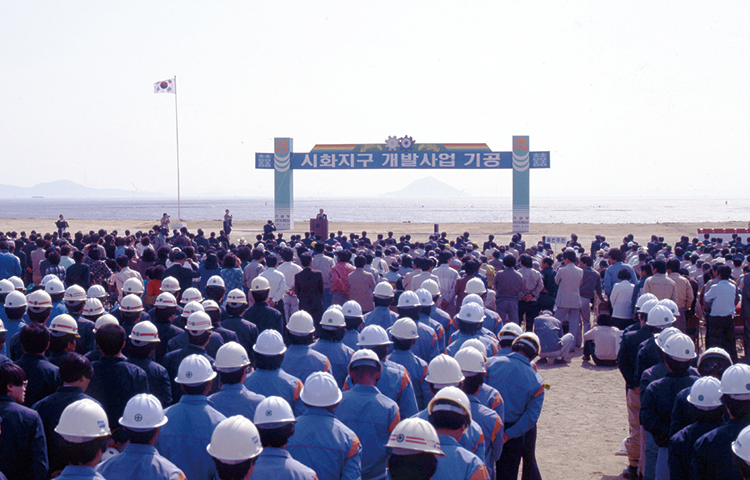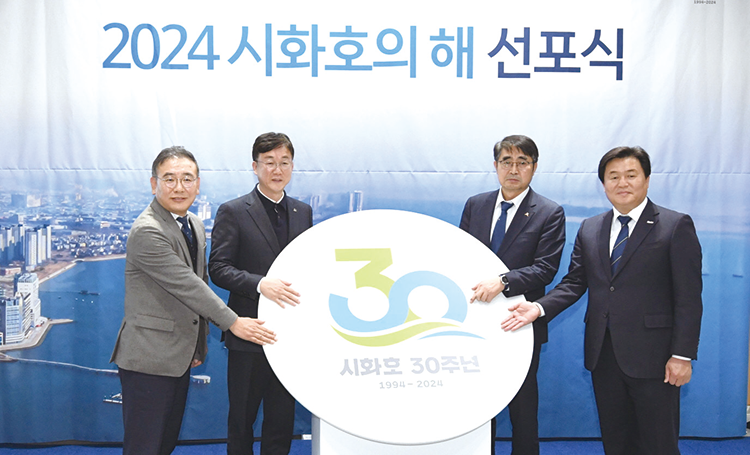Focus on
Lake Sihwa, the Miracle of Reclamation
Opens a New Era
It has already been 30 years since the construction of the Sihwa Seawall was completed. The project faced times of crisis but Lake Sihwa has been reborn as the lake of life where the world’s largest tidal power plant is operating. Now, Lake Sihwa is preparing for takeoff as a hub of eco-friendly energy and marine tourism and leisure activities.
📝Text by. Editorial Team / 💾Source. City Business Management Department & Sihwa Tidal Power Plant Office of K-water

A Bigger Future to be Made by Lake Sihwa
-
There is a giant lake that flows through three cities in Gyeonggi-do—Siheung, Ansan, and Hwaseong—Lake Sihwa. It is an artificial lake created as a result of the construction of Sihwa Seawall that ran from 1987 to 1994 to turn seawater into freshwater and supply it to nearby farming areas. Unfortunately, however, the lake became seriously polluted due to rapid urbanization and industrialization and lack of primary wastewater treatment facilities, earning the nickname “Lake of Death” as a result. There were various causes of water pollution. The amount of water flowing in from the land was smaller than the lake’s capacity, causing pollutants to sink and settle at the bottom of the lake. Moreover, domestic sewer and wastewater from nearby factories flowed into the lake, aggravating the pollution.
In an effort to cope with the problem, K-water, the government, and local municipalities put their heads together and worked out “the Lake Sihwa Water Quality Improvement Project.” They formed a public-private joint governance and worked closely with the local community to improve the lake’s water quality. In 1997, seawater was brought into the lake through the drainage sluice gate as a makeshift measure on condition of the lake’s seawaterization. An increasing volume of seawater continued to flow in over the next two years, and tests were taken to verify the effect. The findings showed that the water quality did improve. The government officially announced Lake Sihwa’s seawaterization plan in February 2001 and finalized the Lake Sihwa Comprehensive Management Plan including the tidal power plant construction project.
Sihwaho Tidal Power Plant started operating, and the tidal mixing rate increased. As a result, Lake Sihwa was transformed into the “lake of life.” With the improved water quality, the tidal flat ecosystem was revived.
Today, you can easily see rockfish, flatfish, jobfish, and shellfish in Lake Sihwa. More than 90 different species of migrating birds come to the lake each year. The lake is now home to rare creatures and migrating birds, also serving as a place for environmental education.
This year marks the 30th anniversary of construction of the Sihwa Seawall. October 10 is designated as the Day of Lake Sihwa under the Ordinance of Gyeonggi-do Province. K-water, together with the cities of Siheung, Ansan, and Hwaseong, declared 2024 as the Year of Lake Sihwa, and it plans to hold a ceremony celebrating the 30th anniversary of Lake Sihwa and an international academic symposium in October. -
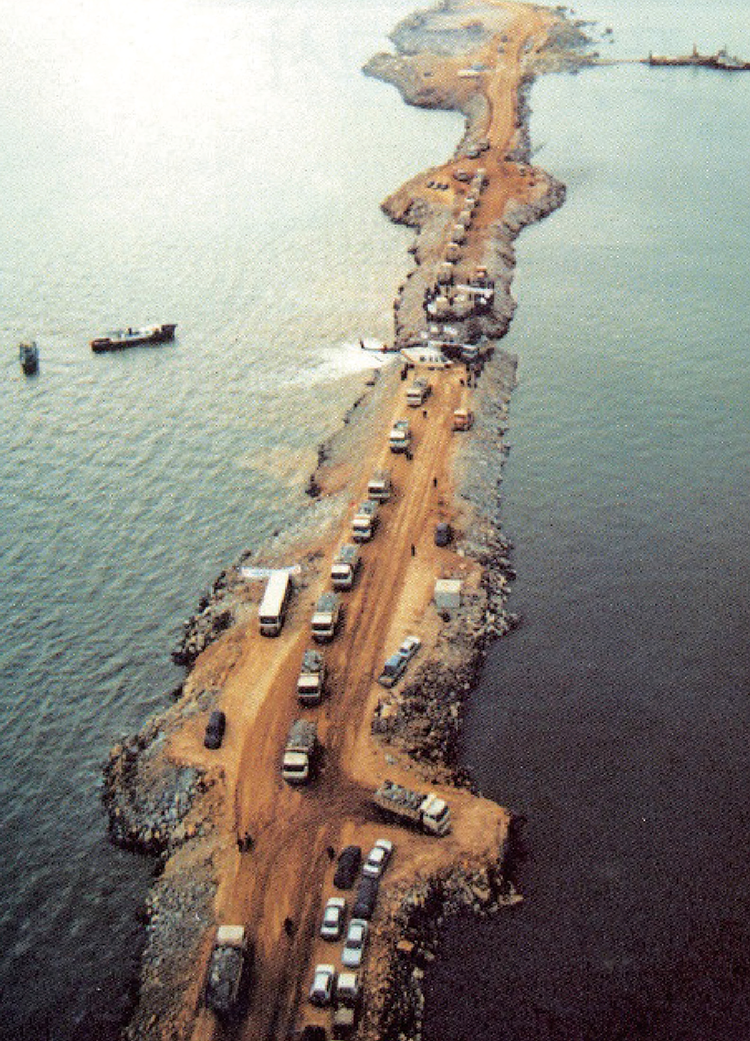
Korea’s Only and the World’s Largest Tidal Power Plant
-
Lake Sihwa is home to Lake Sihwa Tidal Power Station, Korea’s only and the world’s largest tidal power plant. The west coast of Korea together with UK and France is known for big tidal differences, making it an ideal location for a tidal power plant. With a particularly wide spring range of 7.8m, Lake Sihwa was an optimal location for a tidal power plant. Once the tidal power plant was completed, seawater could be brought in to improve the lake’s water quality and generate clean energy.
Construction of Lake Sihwa Tidal Power Station began in 2004, and operation of the plant commenced in 2011. The plant was built on a 138,000㎡ area—13 times the size of a soccer field—on Lake Sihwa, with the world’s largest installed capacity. Ten turbines have an installed capacity of 254,000kW each with annual generation of 552 million kWh, enough for 500,000 people to use for a year.
The tidal power plant has continued to evolve, constantly going through innovation. K-TOP 4.0 is the plant’s smart operating program that integrates digital twin and AI. The program determines the plant’s daily generation schedule for maximum power output, based on the tides and weather condition of the day. The development of K-TOP began in 2015 to improve the efficiency and predictability of tidal power generation. Currently, K-TOP 4.0 is being upgraded to improve the accuracy of power output forecast further and prevent flooding in areas around dams through the effective operation of generation facilities during the summer flood season. The plant is planning to evolve and ultimately switch to an AI-equipped, smart auto-operating system using various big data collected mainly from Lake Sihwa, including marine, weather, ecology, and water quality data, by 2025. -
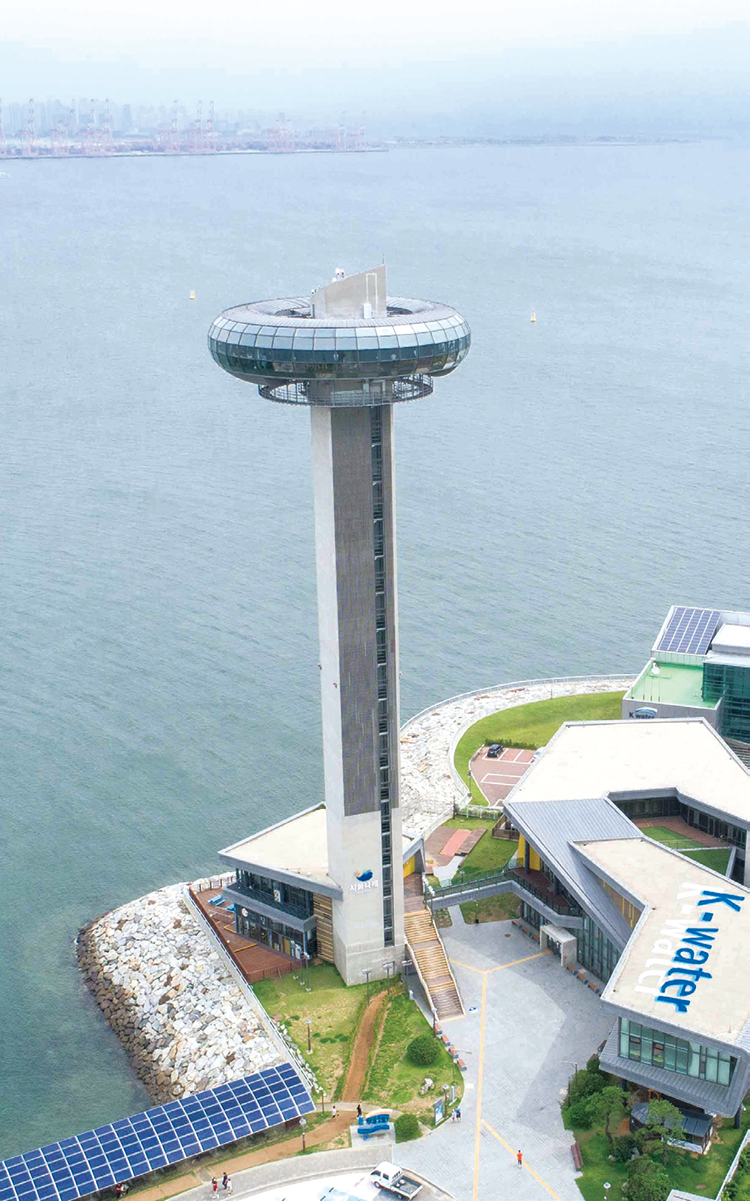

Lake Sihwa Looking to Become a Mediterranean of Korea
Sihwa Tidal Power Plant not only produces clean energy but is a major attraction on the west coast, visited by 2.2 million people every year. Located close to the plant are Moon Tower and Sihwa Tidal Power Culture Pavilion, Sihwa Narae Tidal Power Park, and Sihwa Narae Service Area. With its design concept inspired by the sea waves of the west coast and the cycle of new renewable energy, Sihwa Narae Tidal Power Park is an eco-friendly marine park built with earth and sand generated from the plant’s construction and a popular destination for relaxation. As a multi-use cultural space featuring various media techniques, Tidal Power Culture Pavilion is scheduled to open by the end of the year. Furthermore, a multi-use marine leisure complex around Geobukseom Island near Lake Sihwa has been under construction since 2018. Tenants in the complex include marine entertainment facilities such as Siheung Wave Park—the world’s largest artificial surfing area opened in 2020—a deep diving pool and a marina, as well as long-term stay accommodations. Lake Sihwa is preparing for a new future built around a new identity as a marine ecology brand, in addition to being the hub of new renewable energy and the living textbook on environment.
